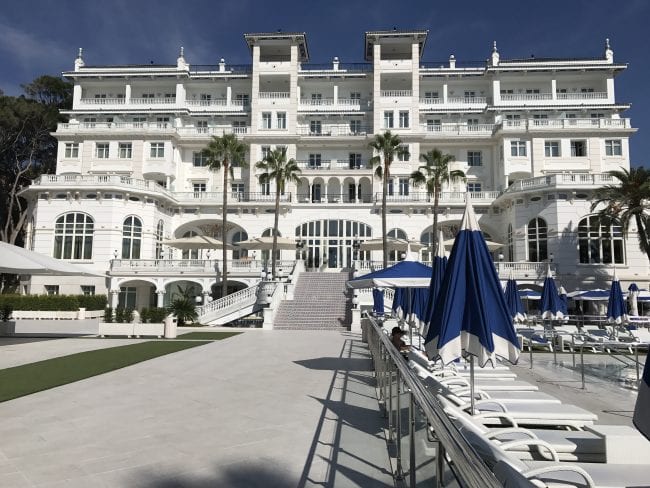THE last time I visited the Palacio de Miramar I was furiously scribbling in a shorthand notebook during a murder trial in 2005.
It was here that Spain’s most infamous expat Tony King had been dispatched to prison for the killing of two teenage girls… and I was researching a book.
Known then as Malaga’s Palacio de Justicia, the wonderful 1920s building had been subdivided into over a dozen courts, and felt like Piccadilly Circus with a melting pot of lawyers and civil servants, not to mention the the accused, the victims and the witnesses all bobbing about.
But while a great place to deliver justice, it simply didn’t do the place justice, if you’ll excuse the pun.

The grand building deserved so much more and so it was something of a masterstroke when the Hoteles Santos group decided to convert it back to its original purpose a decade ago, with the courts packed off to their own purpose-built location nearby.
And while it has taken 10 years to come to fruition the end result is nothing more than the city deserves; a beautiful grand hotel to rival that of the Ritz in Madrid or the Copacabana Palace, in Rio.
The icing on the cake of a two-decade transformation of the city, which is now a true rival to Granada, Cordoba and Sevilla, the Miramar gives Malaga a vital new draw for high end tourism.

While previously tourists to the province had to make do with the obvious choices in Marbella now the Grand Tour for Americans, Chinese and European VIPs can officially stop in Malaga.
It is certainly fitting to discover the hotel was originally designed by the same architect behind Madrid’s aforementioned Ritz and Sevilla’s Alfonso XIII and even more so that he (Fernando Strachan) had British roots.
None of this should of course surprise when you arrive at the gilded gates of the hotel, that was first opened by the King of Spain in 1926 as the Hotel Principe de Asturias.
It’s doormen in hats and gloves are completely dwarfed by the imposing palace, its clean white walls and its fecund gardens, a classic mix of soaring palms and semi-tropical shrubs that are now a century old.
Look up through the gaps and you’ll spot a crown appropriately fitted at the top, while inside you get a distinct sense of space with a grand open atrium and attractive Moorish style arches.
On a weekend stay at the hotel, I was, in particularly, impressed by the quality of staffing that so often makes a difference when staying at a genuine top of the game five star joint.

The GL (Gran Luxe) status is not for nothing and they showed the perfect balance of formal and personable service, as well as attention to detail and knowledge.
While the rooms were comfortable and well appointed with a great media library of films, I particularly liked the charming back garden, with its fabulous Victorian-style terraced pool area with its sunbeds neatly arranged like an Elton John video.
This is also where you find the impressive Prince of Asturias restaurant, on a glamorous dining terrace with two flights of sweeping marble steps up to it.
Here you sit, overlooking the sea and enjoying a classic menu designed by head chef Diego Nicas, who trained at three-Michelin starred Akelarre in San Sebastian and worked at the prestigious Hilton in London’s Park Lane.
Aided by a pair of sous chefs from the UK, the menu is very international, but inspired in its traditional choices, such as beef wellington, sole meunier and crepes suzettes.

“We are trying to go back to our roots and do the classics really well,” explains Nicas. “I’m tired of all the fusion confusion going on these days, you known Indian with Mexican, Asian with Mediterranean. It can all get a bit much.”
I particularly liked his delicious lobster salad with white asparagus, radishes and edible flowers with ‘seaweed butter’, while his sea bass served on a bed of fennel was perfect.
http://www.granhotelmiramarmalaga.com/









